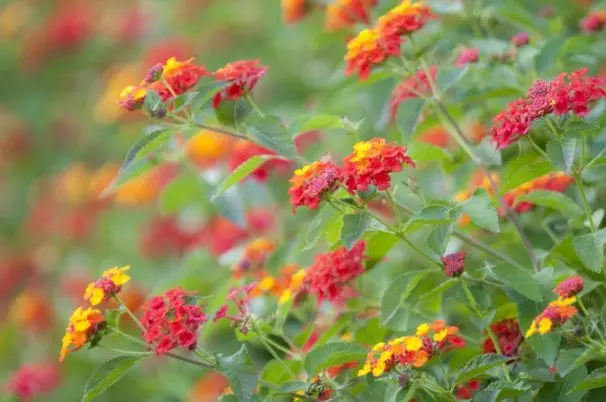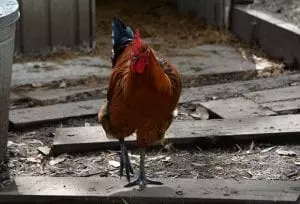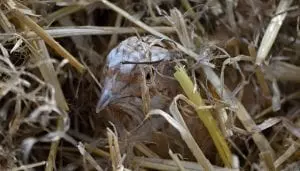Most of us know how much fun (and useful) gardening can be, especially things like: raising or planting-out seedlings and facilitating the beginnings of life, harvesting those crisp vegetable and fruit crops fresh from the backyard, selecting those fragrant herbs, or pruning and admiring those ornamentals strategically positioned around our home.
However, gardening isn't all “big shiny tomatoes and smelling roses,” no way! Before we get to the goodies we are made to work for the pleasure and one of the most laborious tasks to do in any garden is weeding.

Lantana (image above) is a noxious weed running rife in Queensland Australia
What is a weed?
Loosely taken from Wikipedia, a weed can be described as a herbaceous plant not valued for use or beauty, which often reproduces aggressively and grows invasively. In other words, a plant that is a nuisance to have in ones garden.
To me, weeds (including unwanted grasses) are unwanted plants growing amongst and competing with my proper plants for nutrients and sunlight. Weeds are successful plants usually short lived (but not necessarily), which have evolved superior self propagation techniques making them spread easily.
Unfortunately, most weeds are extremely fast growing and are able to outgrow our favoured domestic garden plants and this trait can quickly turn a beautiful healthy garden or vegetable patch into an overgrown, sick looking disaster.
I sometimes wish my harder to grow vegetables grew as well as some of the weeds I see develop in my garden. Can't scientists cross a weed with a large tomato variety or cucumber yet? I wish…
Most governments (state or federal) hav e information sites about weeds pertaining to their particular regions – a Google search for weeds (your area) should bring up the appropriate authority. These sites usually have good descriptions and sometimes even photos of weeds for the public to cross reference their own findings. In some cases, people are obliged by law to destroy certain noxious weeds if found on their property and failure to do so can result in fines.
e information sites about weeds pertaining to their particular regions – a Google search for weeds (your area) should bring up the appropriate authority. These sites usually have good descriptions and sometimes even photos of weeds for the public to cross reference their own findings. In some cases, people are obliged by law to destroy certain noxious weeds if found on their property and failure to do so can result in fines.
Interestingly, many common plants are listed as weeds on official government websites. In my region, passion-fruit vines are an officially listed weed, and I can understand why as certain varieties propagate very easily especially when spread by wildlife. Coincidently, in the past 12 months I have had three passion-fruit vines “pop-up” mysteriously on my property (all different varieties) and I have kept them all – they are delicious! I'm a bad boy.
How to remove weeds?

A good tiller/rotary hoe would make short work of these weeds (above) – I use this method of weed removal in my furrow vegetable garden
As I alluded to in the introduction, weed control is one of my loathed garden tasks and I know it's good exercise but I say phewy to that. Here are some ways to remove weeds:
-
Hand (small gardening tools) – Removing weeds by hand is an obvious way to do the job and unfortunately it's sometimes the only way to do it. One of my first jobs after purchasing my small property was to clear about 1 acre of overgrown weed infested land much of it was lantana ( a large, noxious, bush-like weed with tiny thorns) and clearing by hand was necessary as heavy machinery would have totally ruined the ecosystem and taken-out many good natives I still wanted to keep. However, the job took weeks to complete and was a back-breaking, murderous slog but it was worth the effort in the end…I guess.
-
Hoeing (larger tools) – Hoeing the weeds into the garden providing they haven't yet gone to seed either by hand or even better a rotary hoe is certainly easier than pulling and cutting. This way also adds nutrients back to the soil and organic matter for better water retention. The only negative in using this method is the difficulty in manoeuvring around permanent ornamentals or plants we want to keep due to root disturbance. Just the same, hoeing is a good technique for vegetable beds where the whole area is to be cleared and dug-in. Also, using a brush cutter (whipper snipper) can
 be a fast way to knock weeds back to ground level and then mulching over the top to finish them off. If the weeds have gone to seed then hoeing them in won't be a real problem if the area is heavily mulched but left bare without attention, there will likely be lots more hoeing to do in a few weeks later.
be a fast way to knock weeds back to ground level and then mulching over the top to finish them off. If the weeds have gone to seed then hoeing them in won't be a real problem if the area is heavily mulched but left bare without attention, there will likely be lots more hoeing to do in a few weeks later. -
Animals – In particular, chickens (but we could be talking any poultry or animal like goats). The experience I've had with chickens has really opened my eyes to what a great animal they are as not only do they provide eggs but chickens are very good at turning a weed bed into a fertile garden bed. Yes, control over the animals is critical for maximum results and this does take planning and effort; although, the weeding, cultivating, and fertilising of the bed is done happily for free.
-
Chemical control – Is a very effective way to kill weeds and if used sparingly with care this method can be employed with minimal affect to the environment but there are several major drawbacks to using chemical sprays and these are:
-
Can be indiscriminate and kill every plant unless a select chemical is used, which isn't always practical. Indiscriminate herbicides like Round-up leaves the soil bare and soon after, new (and even more) weeds appear, so, the process needs to be done regularly. Or just as bad, the bare soil is susceptible to erosion.
-
Overuse or poor usage can cause seepage into waterways and damage ecosystems harming good plants and animals.
-
Drift mist can easily harm, stunt, or kill good plants in the garden, inadvertently. Also, the fine droplets can be dangerous to domestic pets and children if venturing on, or touching, sprayed foliage soon after application.
-
Personal protective equipment must be worn when applying as the chemicals are very toxic and the product usually must be mixed, therefore, extra preparation time is required compared with other methods.
-
Die back can take several weeks, look unsightly, and cause sprayed weeds to quickly develop and drop seeds (which are usually unaffected by the chemical).
-
Fairly expensive overall.
-
-
Organic sprays or methods – Cheap household vinegar can make an effective weed killer when sprayed onto weeds and steam wands work too from what I have seen although I haven't personally used one.
-
Smothering – Matting, a tarp, old carpet, or even thick mulch placed over weeds can kill them and turn them into plant food (in time). This method can be an extremely effective and organic way to remove weeds when draped and secured over purpose built vegetable garden beds. Often, when a bed is left to “rest” for some months weeds and grasses develop in the bed; therefore, a low energy and simply way to help prepare the bed for the next crop is to smother all those weeds for several weeks, then, plant the new crop.
Suppressing or controlling weeds

There is no chance any weed will grow in this bed packed with bok choy, lettuce, and rocket greens (Image above)
The best way to control weeds in the home garden is to prevent or at least suppress them from growing in the first place and this can be done by:
-
Competition – This method isn't always practical, nevertheless, outgrowing the weeds is a sure way to beat the buggers and the best example of this method is a good healthy lawn. If the grass is growing good and thick, it can be very difficult for weeds to get a foot-hold. However, what about the garden bed? Well, the same principle can be applied by growing ornamentals or food crops closely together. As long as the crops are spaced close but not so they over crowd detrimentally, weeds stand little chance of developing into any real threat. Lemongrass grown along fence line to suppress weeds in lieu of chemical sprays (image below)

-
Weed matting – Can be a double edged sword because if weed matting is not used correctly it can cause problems in the garden like havens for rodents to breed; unsightly exposed parts; excessive water run-off; impede normal gardening (like digging or adding organic matter and fertilisers); and be a costly ineffective method with new weeds still growing on top of the weed matting anyway. These issues are especially relevant when the wrong type of weed matting is used in the home gar
 den. The two main types of weed matting I've seen are:
den. The two main types of weed matting I've seen are: -
-
Industrial weed matting – Plastic based, this tightly woven type of weed matting is long lasting (almost forever) and very tough. So tough it is difficult to dig through for planting unless a knife is used to cut the matting. I guess this stuff may have it's place in certain areas like sterile industrial estates but it has no place in the home garden. When it does start to break up the thin plastic strands are a tangle threat to animals and the possibility birds (chickens) may eat this stuff by mistake when foraging is a concern. Furthermore, the supposedly permeable matting allows water to run-off (not through) causing unnecessary erosion of soil and mulch whilst suffocating the micro-world in
 the soil underneath.
the soil underneath. -
Environmentally friendly weed matting – This stuff is more like a light material and is designed to break-down in a relatively short period of time depending on exposure (particularly to sunlight). Underneath mulch or gravel the weed matting may last several years but used above ground the sun and elements will crumble the material away to tatters within 12 months. Why use it then? Biodegradable weed matting is handy when used as a temporary measure to initially kill-off then subdue weeds and grasses to help when constructing landscaping tasks like pathways, for instance. Also, great when used as tool in the vegetable patch to keep weeds at bay like for strawberry crops where plants can be planted through the cloth whilst the remaining soil stays covered for the duration of the crop. Being a cloth-like material water tends to soak and move through this type of weed matting easier than the plastic based stuff.
-
-
Baby weed pulling – Daily tours around the garden is something most of us like to do anyway. Use this time to also spot any small baby/seedling weeds and remove them before the
 y get a chance to establish. Many weeds have a long tap root, which can make them difficult to remove when they've been growing for awhile, so by removing the weeds early the task will be much easier. A three pronged scraper or hoe on a long-ish pole can be a handy tool to easily and lightly disturb weed seedlings around vegetables and ornamentals.
y get a chance to establish. Many weeds have a long tap root, which can make them difficult to remove when they've been growing for awhile, so by removing the weeds early the task will be much easier. A three pronged scraper or hoe on a long-ish pole can be a handy tool to easily and lightly disturb weed seedlings around vegetables and ornamentals. -
Mulching – I've already mentioned mulching as a way to help kill-off small weeds; suffice to say, mulching can also inhibit them from growing altogether. Mulching in the garden by using compost, seed-free hay, sugar cane, lucerne, leaves, etc is a way to suppress weeds, feed the good plants, and retain moisture in the soil.
Conclusion
Weeds, we'll never beat'em in the home garden but we can manage them as long as we're vigilant. Tackling the little weed and whipping it out before it becomes anchored or goes to seed is the best control measure we can take. 
However, if time gets away (as it does) and an area becomes thick and infested with weeds then just do what I usually do: music on – gloves on – head down – bum up, and get pulling.
If you have any tips about weeds or how to remove/control them why not make a comment below (no email is required).
Look, and see the Earth through her eyes
Mark Valencia – Editor SSM

 be a fast way to knock weeds back to ground level and then mulching over the top to finish them off. If the weeds have gone to seed then hoeing them in won't be a real problem if the area is heavily mulched but left bare without attention, there will likely be lots more hoeing to do in a few weeks later.
be a fast way to knock weeds back to ground level and then mulching over the top to finish them off. If the weeds have gone to seed then hoeing them in won't be a real problem if the area is heavily mulched but left bare without attention, there will likely be lots more hoeing to do in a few weeks later. 
 den. The two main types of weed matting I've seen are:
den. The two main types of weed matting I've seen are: the soil underneath.
the soil underneath.  y get a chance to establish. Many weeds have a long tap root, which can make them difficult to remove when they've been growing for awhile, so by removing the weeds early the task will be much easier. A three pronged scraper or hoe on a long-ish pole can be a handy tool to easily and lightly disturb weed seedlings around vegetables and ornamentals.
y get a chance to establish. Many weeds have a long tap root, which can make them difficult to remove when they've been growing for awhile, so by removing the weeds early the task will be much easier. A three pronged scraper or hoe on a long-ish pole can be a handy tool to easily and lightly disturb weed seedlings around vegetables and ornamentals. 









